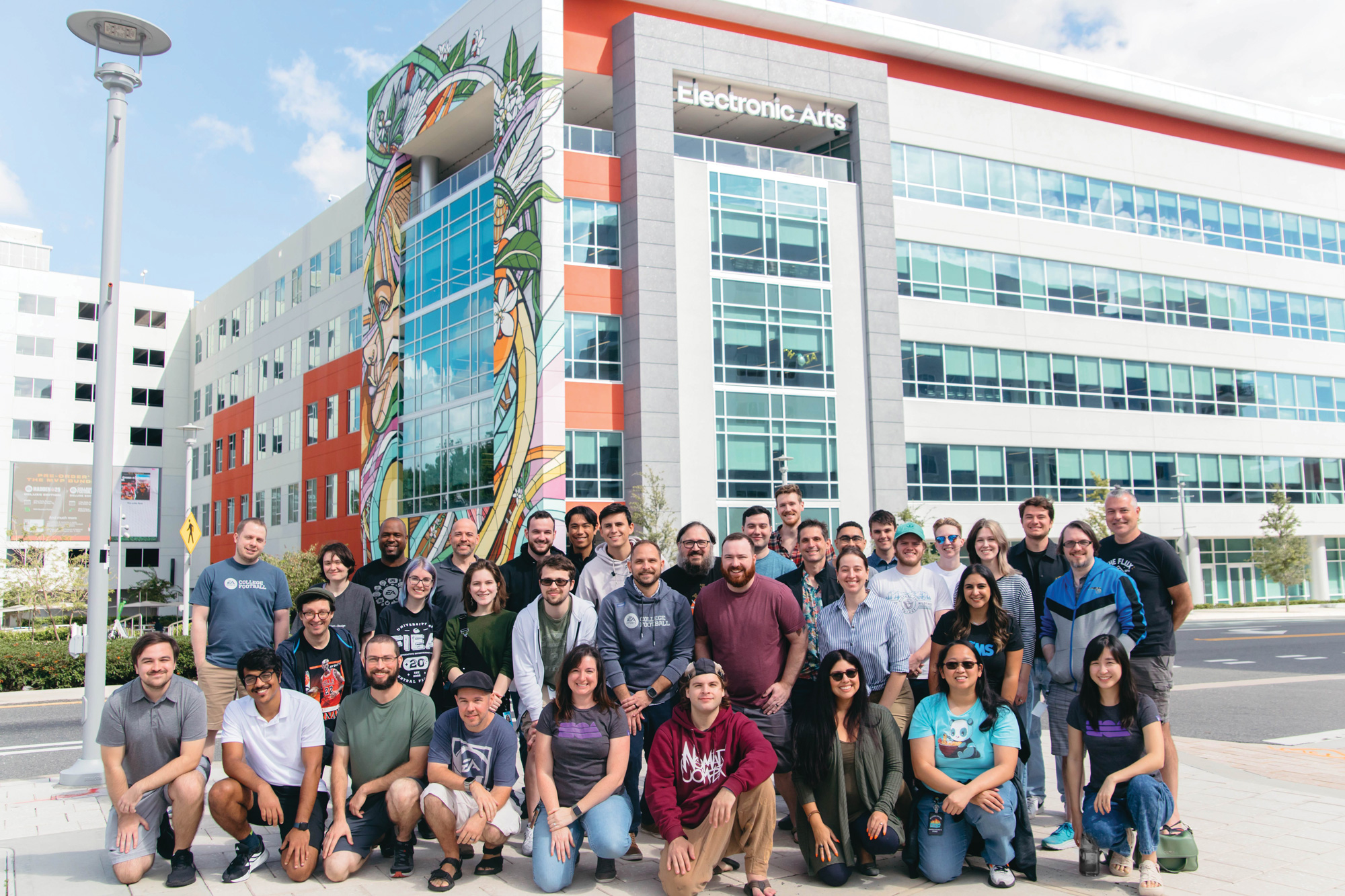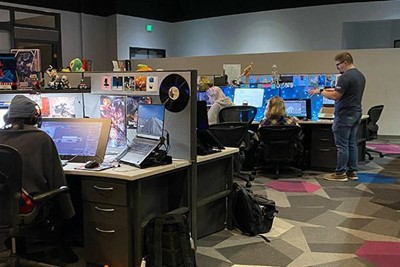Considering an MS in Game Development? 5 Key Factors to Evaluate a Potential Program

Photo Credit: Berona Muro
PRESENTED BY FLORIDA INTERACTIVE ENTERTAINMENT ACADEMY (FIEA) AT THE UNIVERSITY OF CENTRAL FLORIDA
In the booming gaming industry, a graduate degree can help increase your salary and prospects and help you reach your career goals. Whether you want to pursue Production, Art or Programming, an advanced degree offers an opportunity for intensive, hands-on learning to deepen your expertise in the field, expand your network connections with faculty and alumni, and make yourself a very competitive candidate for jobs in the industry.
Here are five key factors from the FIEA Master of Science in Interactive Entertainment degree program at the University of Central Florida that you can use to assess whether a graduate program in the entertainment and gaming industry is the right fit for you.
1. Who Founded the Program/How is It Funded
In the relatively newer field of gaming and interactive entertainment, funding is critical to not only create, but sustain, a program. For graduate students seeking to generate strong network connections and find high-paying jobs, it is useful to research the founding of the program, as well as any ongoing funders of the program. Understanding program founders, partners, and funders can shed light on the overall resources available, their ability to offer cutting edge technology, as well as the potential pipeline for jobs upon graduation.
In Florida, industry leader Electronic Arts (EA) was keen to build upon the success of titles like Madden NFL Football with a strong funnel of future employees for its high wage jobs. EA worked with the governor, local economic development commission, and the University of Central Florida to provide funding for the creation of a graduate-level game development program. Since the first 12 students enrolled in 2005, FIEA has grown considerably, with 1,078 alumni as of December 2024.
2. Faculty Background and Program Structure
To be the best, you want to learn from the best. Be sure to explore the faculty bios for any program you are considering. Do you see potential mentors for your area of interest? Where did they gain their experience in the field? You will also want to explore the structure of the program and curriculum; how much time is devoted to hands-on learning, collaboration, team/project-based learning, to mimic the industry?
At FIEA, students are put through the paces by industry veterans with more than 80 titles in their CV who are now academic veterans in the classroom. With a student-teacher ratio of 8:1, FIEA faculty are full-time instructors, teaching on the cutting edge of each newly released console and every new game engine.
Whether on the Production track with sub-track options in project management, technical design, and level design; Art track with 3D modeling, animation, and technical art sub-tracks; or the Programming track, each student spends about half of their time improving their own chops and portfolio. The other half is spent working on team projects, from smaller teams in rapid prototype productions to large teams of 20 across all disciplines on eight-month long capstone projects. These capstone games are released on Steam for review, with many earning critical acclaim.

3. Cost, Funding, and Length of Program
Graduate school is expensive, so be sure to research the tuition and cost of living in the area, as well as grant and scholarship money available through the program or from the community/industry. Find out when paid internships might come into play in the course of your studies, as these internships, as well as the total length of the program, will help offset costs.
FIEA’s MS in Interactive Entertainment program was designed as a 16-month program with grad students in mind. All of the faculty come from the industry, most of whom attended graduate school and know what a two-year degree could cost students in terms of time and money. The 16-month program incorporates three semesters of classes followed by a fourth (final) semester of either a digital venture practicum or a high-paying internship.
Time is money. FIEA program tuition is half the cost of other similar programs around the country thanks to additional funding from the State of Florida. With the average cost of living being up to $2,500 a month beyond tuition, FIEA students are saving $20,000 or more in living expenses with the 16-month program versus a two-year program. Because many students have a high-paid internship by the time they finish their third semester, the net cost may be closer to that for 12 months. Last year, more than half of the incoming class received scholarships and fellowships. FIEA provided more than $150,000 in awards. Two scholarship endowments of more than $250,000 have been established via Electronic Arts and Iron Galaxy Studios to promote diversity and inclusion in the game industry.
4. Location and Resources
Location is important for cost-of-living considerations, but it may be just as important if you dream of working for a particular studio or see a strong path to employment for any particular program. Researching which companies typically hire and recruit from your prospective graduate program is not a guarantee, but can help set you on the right path.
FIEA’s location offers a significant advantage for students with its Downtown Campus location, immersed in Creative Village Orlando with Electronic Arts’ 1,000-person studio, and just blocks away from Microsoft Games Studio and Iron Galaxy Studios. The Creative Village now has more than 2,000 professional and student game developers within the vicinity in downtown Orlando.
Beyond these critical connections, a successful program also offers state-of-the-art facilities. FIEA has more than 15,000 square feet of studio collaboration space, with each station having multiple monitors, Cintiqs, and Aeron ergonomic seating. Each student receives a Dell G16 high-capacity gamer laptop on the first day of school which is theirs to keep after graduating. Inside FIEA’s Studio 500, students have access to 7,000+ square feet of sound stages and a AAA-quality motion-capture studio utilized by both students and commercial partners. The studio also includes eight concept conference rooms, multiple VR labs, a stadium-seating teaching auditorium, a theatre, and a FIEA Ventures space for alumni through the UCF Business Incubator Program.
5. Network and Industry Connections
Everyone in the game industry will tell you it is still a small network. One big benefit to graduating from an MS gaming program is gaining access to the elite faculty and alumni network for that program. Check out the school calendar to get a sense of the quality of guest lecturers and events to enhance your overall experience outside the classroom. These events offer additional avenues to create new network connections, connect with companies, or simply learn the latest trends and technology in the field.
Connections run deep among FIEA faculty and staff, which can make a real difference when you graduate and apply for a job. FIEA has 100+ guest speakers and lecturers each year from approximately 50 studios and entities globally. FIEA has many studios providing industry days both in person and online each spring and summer, prior to the internship semester to facilitate recruiting. FIEA graduates see an 80% placement rate in the industry, with an average full-time annual salary offer of more than $80,000. Many FIEA alumni have gone on to succeed as producers, technical and art leads, and studio heads with their 1,078 graduates at more than 400 locations around the world.
If access to elite faculty, strong alumni network, and an incredibly beneficial location with solid industry funding appeals to you, then maybe it’s time to apply to a graduate program in game development. While the decision to attend graduate school incurs expenses, FIEA attempts to reduce the burden as much as possible through a shorter program, lower tuition, and scholarships and grants.
If you’re interested in becoming a partner of The Princeton Review and sponsoring educational content, click here for details .
Explore Graduate Programs for You
Explore our featured graduate schools & programs to find those that both match your interests and are looking for students like you.
Best Law Schools
Check out our complete list of 168 law schools, based on surveys of school administrators and over 17,000 students.
Search for Medical Schools
Our medical school search allows you to refine your search with filters for location, tuition, concentrations and more.

Find MBA Programs Matched to Your Interests
Explore our featured business schools to find those that are looking for students like you.


